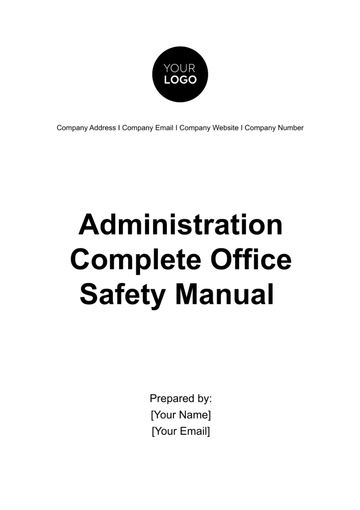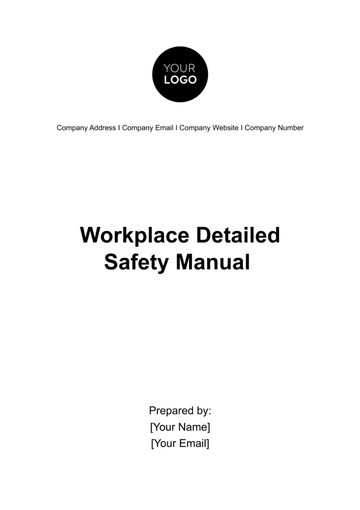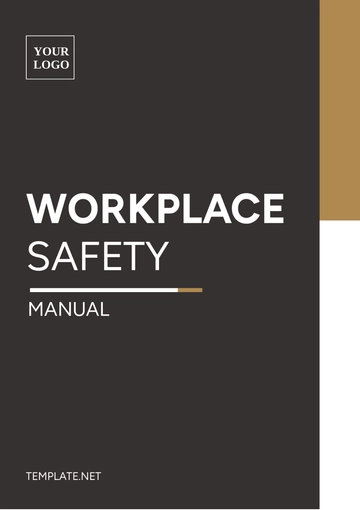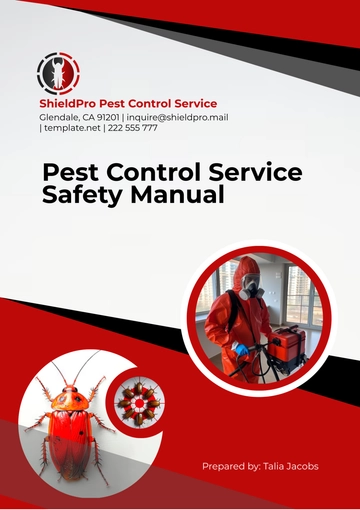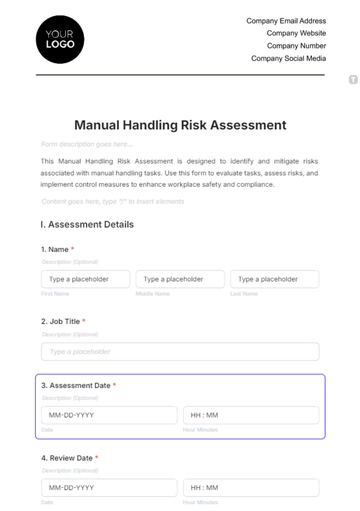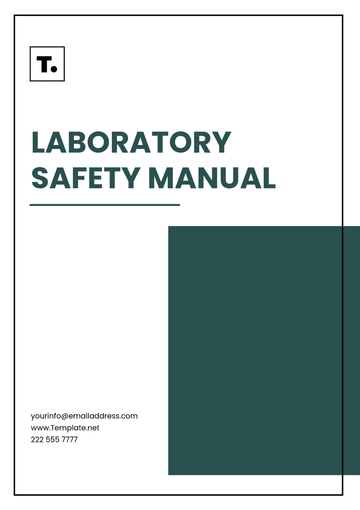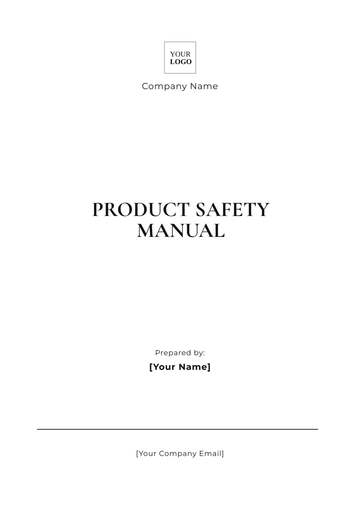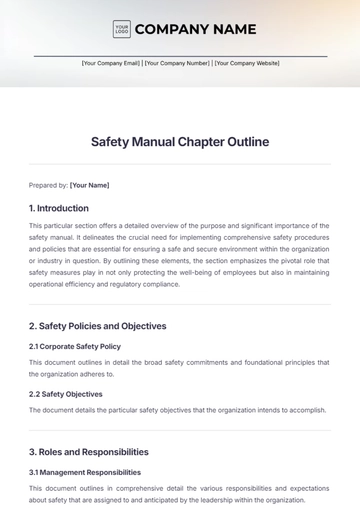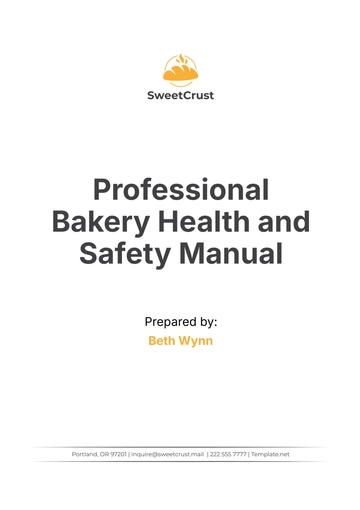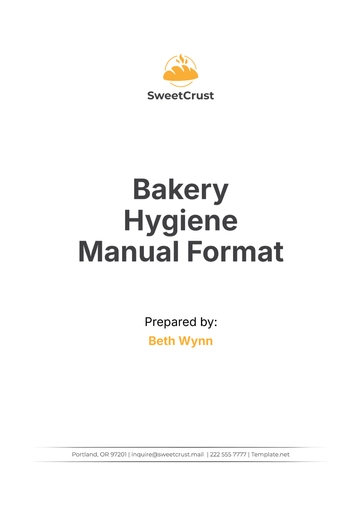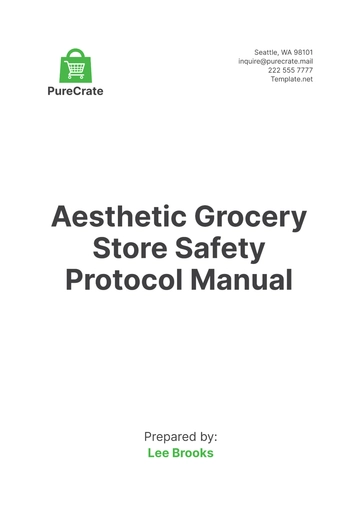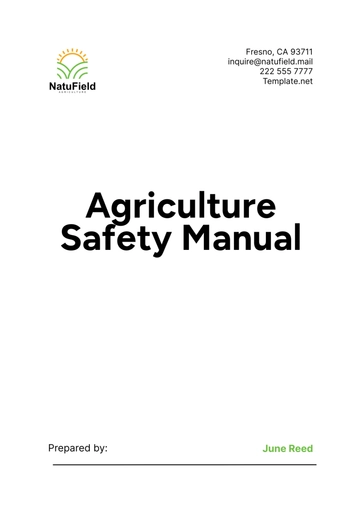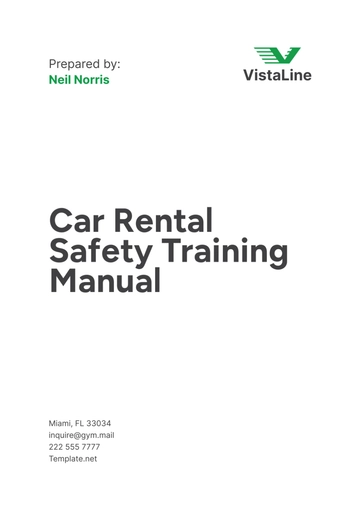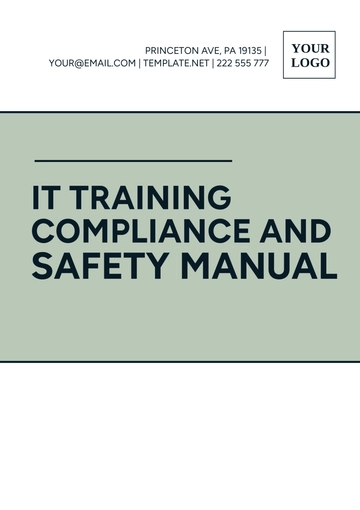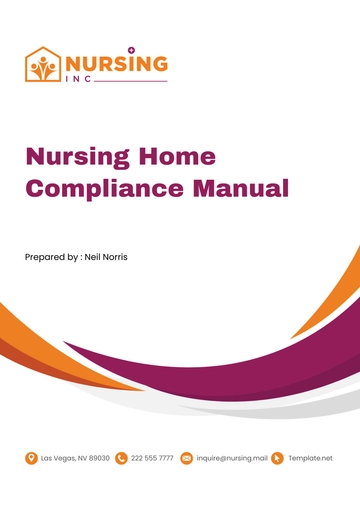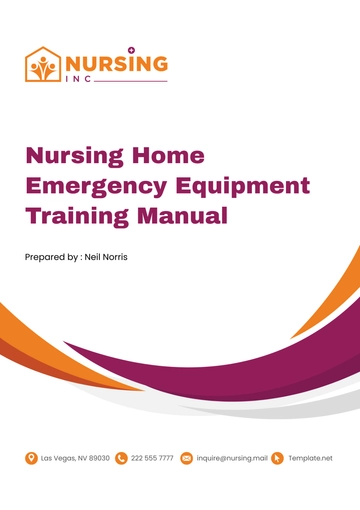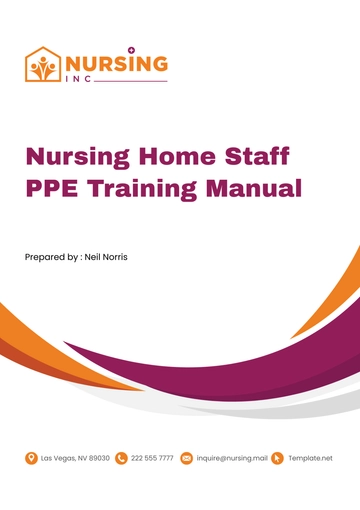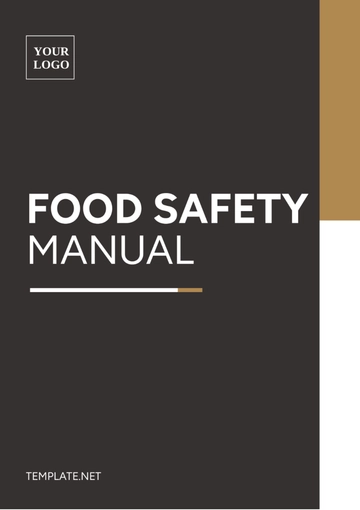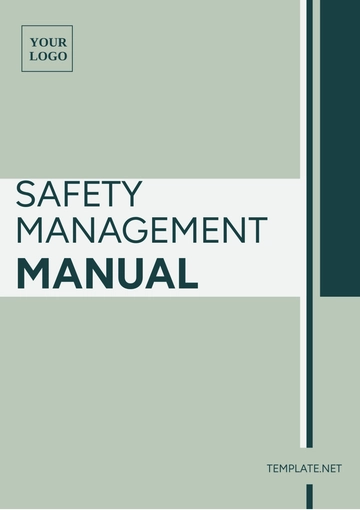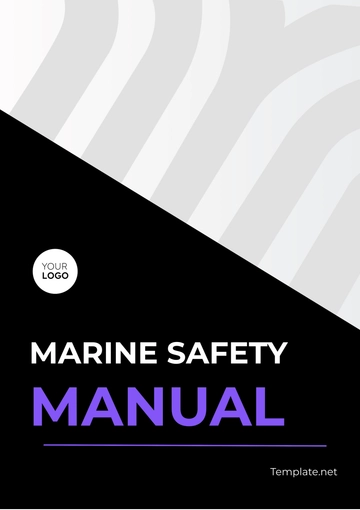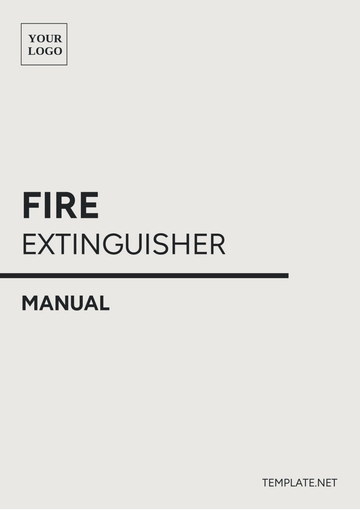Free Health & Safety Training Manual
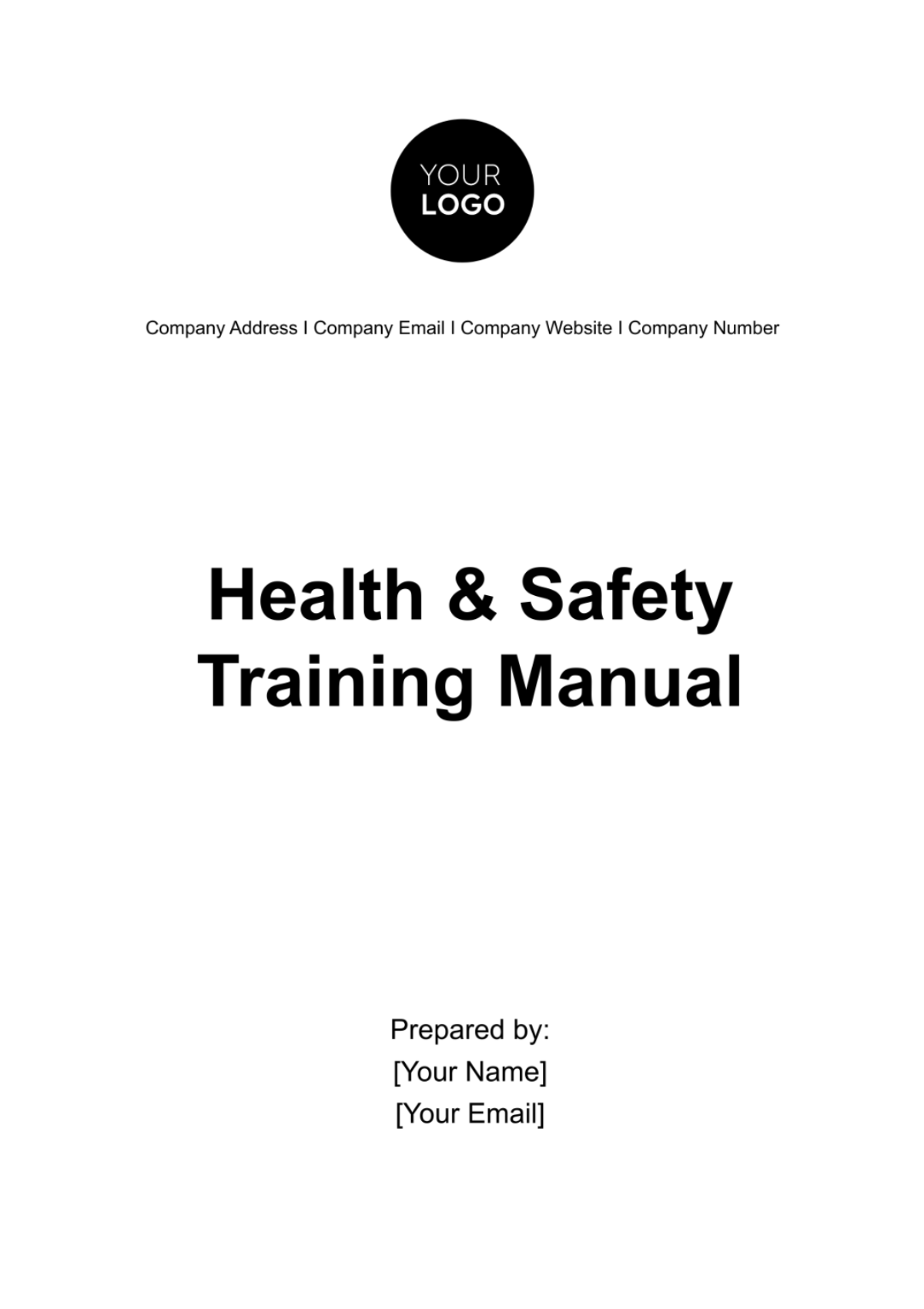
Introduction
A. Purpose
The purpose of this Health & Safety Training Manual is to provide [Your Company Name] employees with comprehensive guidance on maintaining a safe and healthy workplace. This manual aims to ensure that all employees have a clear understanding of their responsibilities in upholding health and safety standards within the organization.
B. Scope
This manual encompasses a wide range of topics related to health and safety, covering all aspects of the workplace environment. The scope includes, but is not limited to, the following areas:
1. Worksite Safety
Proper use of equipment and machinery.
Safe handling of hazardous materials.
Fire safety and emergency response procedures.
Workplace cleanliness and organization.
General safety rules and guidelines for preventing accidents.
2. Employee Health
Promoting physical and mental well-being.
Guidelines for ergonomic workstations and practices.
Encouraging a healthy work-life balance.
Support and resources for employees' physical and mental health.
3. Environmental Safety
Ensuring environmentally friendly practices.
Compliance with environmental regulations.
Reducing waste and conserving resources.
Sustainable work practices and policies.
C. Responsibility
It is the shared responsibility of every employee, from the most junior staff member to senior management, to adhere to the guidelines outlined in this manual and actively participate in maintaining a safe working environment. Specific responsibilities include:
1. Employees
Following safety procedures and guidelines.
Reporting safety hazards and incidents promptly.
Using personal protective equipment (PPE) as required.
Participating in safety training programs.
Supervisors and Managers
Leading by example in following safety protocols.
Conducting regular safety inspections and audits.
Ensuring that employees receive adequate training.
Promptly addressing safety concerns raised by employees.
Health & Safety Committee
Collaborating with management to develop and update safety policies.
Reviewing incident reports and recommending corrective actions.
Organizing safety drills and emergency preparedness training.
Serving as a resource for employees seeking safety guidance.
Health & Safety Policy
A. Policy Statement
[Your Company Name] is committed to providing a safe and healthy workplace for all employees. Our policy is founded on the following principles:
1. Compliance with Regulations
[Your Company Name] is dedicated to complying with all relevant local, state, and federal health and safety regulations.
2. Continuous Improvement
We strive for continuous improvement in our safety practices by regularly reviewing and updating policies and procedures.
3. Employee Involvement
Employees are encouraged to actively participate in maintaining a safe working environment by reporting hazards and providing input on safety improvements.
B. Compliance
Employees are expected to fully comply with all safety policies and procedures outlined in this manual. Non-compliance with safety regulations may result in disciplinary actions.
C. Reporting Incidents
All incidents, accidents, near-misses, and hazards must be reported promptly using the [Your Company Name] incident reporting system. Reporting incidents is crucial for investigating root causes and implementing corrective actions to prevent future occurrences.
Hazard Identification
A. Definitions
To ensure a thorough understanding of hazard identification, it's important to clarify some key definitions:
1. Hazard: A hazard is any potential source of harm or adverse health effects. Hazards can be physical, chemical, biological, ergonomic, or psychosocial in nature. Identifying hazards is the first step in preventing accidents and injuries.
2. Risk Assessment: Risk assessment involves evaluating the likelihood and severity of potential hazards. It helps prioritize which hazards need immediate attention and which can be managed over time. Risk assessments are conducted regularly to ensure the ongoing safety of our workplace.
B. Risk Assessment
Risk assessment is a systematic process that [Your Company Name] uses to identify, evaluate, and control workplace hazards. Here's how it works:
1. Identification
Employees and supervisors are encouraged to report any potential hazards they encounter.
Regular workplace inspections are conducted to identify hazards, including those related to equipment, materials, and processes.
2. Evaluation
Once a hazard is identified, it is evaluated for its severity and likelihood of causing harm.
A risk matrix or similar tool may be used to categorize hazards based on their risk level.
3. Control
Based on the evaluation, control measures are implemented to mitigate or eliminate the hazards.
Control measures may include engineering controls, administrative controls, or the use of personal protective equipment (PPE).
C. Workplace Inspections
Regular workplace inspections are conducted by designated personnel to identify and address potential hazards. These inspections include:
1. Frequency: Inspections are conducted at least monthly and more frequently in high-risk areas.
2. Documentation: Inspection findings are documented and shared with relevant parties. Corrective actions are assigned and tracked to resolution.
Safe Work Procedures
A. General Safety Rules
[Your Company Name] has established general safety rules that must be followed by all employees. These rules include:
1. Personal Protective Equipment (PPE)
Employees must wear appropriate PPE when required, such as helmets, gloves, safety glasses, or hearing protection.
PPE must be maintained in good condition and replaced as needed.
2. Machinery and Equipment
Only trained and authorized employees may operate machinery and equipment.
Pre-operation inspections must be conducted, and any defects or malfunctions reported immediately.
3. Hazardous Materials
Proper labeling, storage, and handling of hazardous materials must be observed.
Employees must be trained in the safe use of hazardous substances.
B. Emergency Response
[Your Company Name] is committed to a quick and effective response in case of emergencies. Employees should be familiar with the following emergency response procedures:
1. Evacuation
Evacuation routes and assembly points are clearly marked and known to all employees.
Fire drills and emergency evacuation drills are conducted regularly.
2. First Aid and Medical Services
First aid kits are available throughout the workplace, and trained first aid responders are designated.
Emergency medical services are accessible and contact information is readily available.
Training and Education
A. Training Needs Assessment
To ensure the safety and competence of all employees, [Your Company Name] conducts regular training needs assessments. This process involves:
1. Identification of Training Needs
Supervisors and managers work closely with HR to identify specific training needs for each employee or department.
Training needs are based on job roles, tasks, and potential hazards associated with those roles.
2. Training Plan Development
A comprehensive training plan is created, outlining the training objectives, methods, and schedules.
Training plans are reviewed and updated regularly to address changing needs.
B. Training Programs
[Your Company Name] offers a range of training programs to ensure that employees have the knowledge and skills necessary to perform their jobs safely. These programs include:
1. New Employee Orientation
All new employees receive an orientation that covers basic safety rules, emergency procedures, and an overview of our health and safety policies.
2. Job-Specific Training
Employees receive training tailored to their specific job roles, which includes hands-on practice and assessment of skills.
Job-specific training is conducted regularly, especially when new equipment or processes are introduced.
3. Hazard Communication Training
Employees who work with hazardous materials receive training on proper handling, storage, and disposal of these materials.
This training includes understanding Safety Data Sheets (SDS) and labeling requirements.
C. Records and Documentation
[Your Company Name] maintains detailed records of all training and education activities. This includes:
1. Training Records
Records of employee training are kept electronically and in hard copy.
These records include the type of training, date, duration, and the names of employees who completed the training.
2. Certification
Employees who successfully complete training programs receive certificates or documentation of their training achievements.
This documentation is filed in their personnel records.
Incident Reporting and Investigation
A. Reporting Procedures
Prompt and accurate reporting of incidents, accidents, near-misses, and hazards is essential to maintaining a safe workplace. Employees are expected to follow these reporting procedures:
1. Reporting Channels
Incidents can be reported through various channels, including supervisors, managers, or directly through the incident reporting system.
Anonymous reporting options are available to encourage transparency.
2. Incident Documentation
Employees must provide detailed information about the incident, including the date, time, location, and individuals involved.
Any photos, witness statements, or supporting documents should be included.
B. Investigation Process
Upon receiving an incident report, [Your Company Name] initiates an investigation process to determine the root causes and prevent future occurrences. The investigation process includes:
1. Immediate Response
If necessary, immediate actions are taken to ensure the safety of all employees.
The incident scene may be secured, and medical attention provided if needed.
2. Investigation Team
A designated investigation team, which may include safety professionals, is assembled to conduct a thorough investigation.
The team interviews witnesses, reviews documentation, and analyzes the incident.
3. Corrective Actions
Based on the investigation findings, corrective actions are developed and implemented to prevent similar incidents.
These actions may include process changes, additional training, or equipment modifications.
Emergency Preparedness
A. Emergency Response Plan
[Your Company Name] maintains a comprehensive Emergency Response Plan to address various types of emergencies that may occur in the workplace. Key elements of the plan include:
1. Emergency Contacts
A list of emergency contacts, including local authorities, medical facilities, and key personnel, is readily available.
Employees should familiarize themselves with these contacts and know how to reach them in case of an emergency.
2. Evacuation Procedures
Detailed evacuation procedures are outlined for different types of emergencies, such as fires, chemical spills, or natural disasters.
Evacuation routes and assembly points are clearly marked and regularly practiced through drills.
3. Communication
Communication protocols are established to ensure that employees receive timely and accurate information during emergencies.
Methods of communication may include alarms, PA systems, or mobile notifications.
B. Evacuation Procedures
In the event of an evacuation, employees should follow these procedures:
1. Alarm Activation
When an evacuation alarm is activated, employees should cease their activities immediately and proceed to the nearest exit.
Do not use elevators during evacuations.
2. Evacuation Routes
Familiarize yourself with the designated evacuation routes and assembly points in your area.
Help colleagues, visitors, or persons with disabilities to evacuate safely.
3. Head Counts
Upon reaching the assembly point, employees should report to designated personnel to ensure that everyone is accounted for.
If someone is missing, inform emergency responders promptly.
C. First Aid and Medical Services
[Your Company Name] is committed to providing immediate first aid and medical attention when needed. Key components of our first aid and medical services include:
1. First Aid Kits
First aid kits are strategically located throughout the workplace and are clearly marked.
Employees should know the locations of these kits and how to use them.
2. First Aid Responder
Trained first aid responders are designated in each department or work area.
These responders are responsible for providing initial medical assistance until professional help arrives.
Safety Data Sheets (SDS)
A. Access and Availability
Safety Data Sheets (SDS) are essential documents that provide detailed information about hazardous chemicals used in the workplace. [Your Company Name] ensures that:
1. Access
SDS are readily accessible to all employees who work with or are exposed to hazardous materials.
Electronic access may be available through the company's intranet.
2. Availability
SDS are available in multiple languages if needed to accommodate a diverse workforce.
New SDS are obtained whenever new hazardous materials are introduced.
B. Chemical Handling
Employees who work with hazardous chemicals must adhere to strict guidelines for safe handling. These guidelines include:
1. Training
Employees receive training on the proper handling, storage, and disposal of hazardous chemicals.
The training includes understanding the information provided in SDS.
2. Labeling
Containers of hazardous chemicals are labeled with clear, legible, and standardized labels.
Labels include information about the chemical's identity, hazards, and safe handling precautions.
Health & Safety Committees
A. Committee Structure
[Your Company Name] establishes Health & Safety Committees to actively promote and maintain a safe working environment. The committee structure includes:
1. Committee Formation
Committees consist of both management and employee representatives to ensure diverse perspectives.
Members are selected based on their knowledge of safety practices and their commitment to safety.
2. Roles and Responsibilities
Committees are responsible for reviewing safety policies, incident reports, and suggesting improvements.
They facilitate communication between employees and management regarding safety concerns.
B. Meeting Procedures
Health & Safety Committees meet regularly to discuss safety issues and initiatives. Meeting procedures include:
1. Meeting Frequency
Committees typically meet monthly to discuss safety matters.
Emergency meetings can be convened as needed.
2. Agenda and Minutes
An agenda is prepared before each meeting to ensure that key topics are covered.
Meeting minutes are documented and distributed to relevant stakeholders to track progress.
- 100% Customizable, free editor
- Access 1 Million+ Templates, photo’s & graphics
- Download or share as a template
- Click and replace photos, graphics, text, backgrounds
- Resize, crop, AI write & more
- Access advanced editor
Empower your team with the Health & Safety Training Manual Template from Template.net. Crafted to compile a thorough manual, it covers essential health and safety topics for comprehensive employee training. Designed as an informative and easy-to-follow guide, it's indispensable for fostering a safe work environment. Download now to provide your team with a valuable resource for safety education and training.

